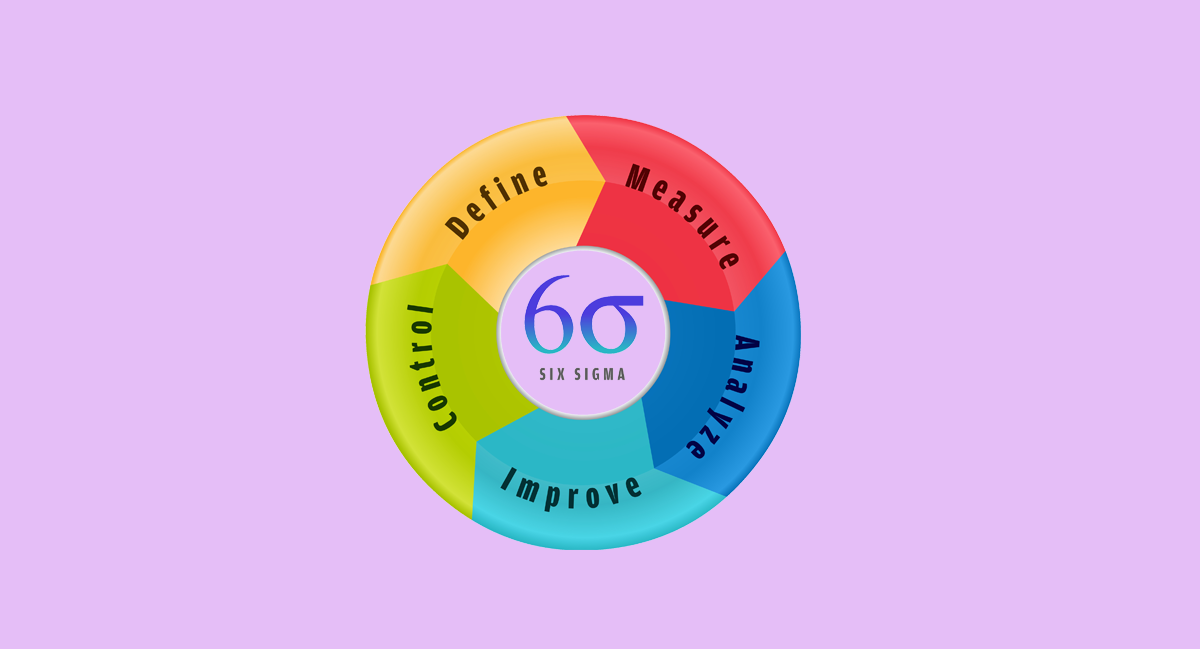Imagine a world where every product you buy is flawless, every service you receive is impeccable, and every interaction leaves you feeling valued. That’s the ambitious dream of Six Sigma, a methodology that has revolutionized businesses across the globe. But what exactly is Six Sigma, and how can it turn this dream into reality?
Six Sigma is more than just a catchy name; it’s a data-driven philosophy for continuous improvement. It’s like having a personal sensei for your business processes, constantly identifying weaknesses and guiding you towards operational excellence. At its core, Six Sigma revolves around minimizing defects and variation, ultimately leading to near-perfect quality.
Here’s how Six Sigma achieves this seemingly impossible feat:
The Guiding Light: DMAIC
Six Sigma follows a structured approach called DMAIC, an acronym for the five crucial phases that form the heart of any improvement project:
- Define: This is where you identify the problem child – the specific process that needs a makeover. Clearly define what the project aims to achieve, keeping the customer’s needs at the forefront.
- Measure: Data is the oxygen of Six Sigma. In this phase, you meticulously measure the current state of the process. How many defects are there? What’s the cycle time? Every detail is meticulously documented to establish a baseline for improvement.
- Analyze: Once you have the data, it’s time to play detective. Analyze the information to identify the root cause of the defects. Are there training gaps? Faulty equipment? By using statistical tools and techniques, you pinpoint the gremlins lurking in the system.
- Improve: Now comes the magic. Armed with the knowledge of the root cause, you brainstorm and implement solutions to eliminate the defects. This could involve anything from redesigning a workflow to retraining employees.
- Control: Here’s the twist – Six Sigma isn’t a one-time fix. It’s about sustainable improvement. In this phase, you establish control mechanisms to ensure the improved process stays on track. Monitoring and continuous measurement become crucial to prevent defects from creeping back in.
The Power of Two: DMADV
While DMAIC tackles existing problems, Six Sigma also offers a proactive approach called DMADV, used for designing and developing new products or services. Here’s the breakdown:
- Define: Similar to DMAIC, you define the project goals and identify customer needs. What problem are you trying to solve with this new offering?
- Measure: Here, the focus shifts to measuring customer needs and expectations. What features are critical? Understanding the “voice of the customer” becomes paramount.
- Analyze: This phase involves analyzing the feasibility of the design based on the gathered data. Can the product be manufactured cost-effectively? Does it meet all customer requirements?
- Design: With a clear understanding of customer needs and technical feasibility, you develop the product or service design. This is where innovation takes center stage.
- Verify: The final phase is all about testing and validation. Does the final product meet all the specifications and customer expectations? Rigorous testing ensures a smooth launch and minimizes the risk of defects.
The Secret Sauce: It’s All About People
Six Sigma isn’t just about fancy tools and techniques; it’s about empowering people. Here are some key principles that make Six Sigma tick:
- Customer Focus: The customer is king (or queen) in Six Sigma. Every decision and improvement is ultimately driven by delivering maximum value to the customer.
- Data-Driven Decisions: Emotions and hunches take a back seat in Six Sigma. Decisions are based on cold, hard data, ensuring objectivity and a clear path towards improvement.
- Teamwork: Six Sigma thrives on collaboration. Teams with diverse skillsets work together to identify and solve problems, fostering a culture of continuous learning and shared ownership.
The Takeaway: A Recipe for Success
Six Sigma offers a powerful framework for businesses of all sizes. By minimizing defects and variation, it leads to increased efficiency, reduced costs, and ultimately, happier customers. Whether you’re a seasoned business leader or just starting your journey, Six Sigma provides a roadmap to operational excellence.
So, the next time you encounter a frustrating process, remember the power of Six Sigma. With a little data, a sprinkle of teamwork, and a dash of continuous improvement, you can transform your business into a well-oiled machine, churning out quality and exceeding customer expectations.


